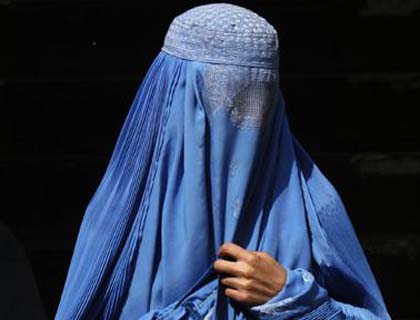Afghan women were susceptible to social and political harms throughout the history. They underwent great sufferings in war and peace. Their rights and dignity were violated in one way or another. They were restricted within the four walls, bereft of their basic rights, on the grounds of being female. Under the tribal rule, Afghan women were subjugated to the wishes of their male partners. Girls fell victim to honor killings.
Under the Taliban, girls were coerced to abandon school. They were treated as mere pariah and had to suffer under more radical ideology. Women were considered as being inherently devilish – that tempts men to succumb to sin. In other words, their feminine attraction, the Taliban believed, was a threat to man’s faith – a highly ridiculous frame of mind, isn’t it?
They were pummeled severely in case of neglecting the Taliban’s rule such as coming out without wearing burqa. The women’s freedom was curtailed to a large extent. Education was suitable only for men and the society did not need, as they believed, female doctors, engineers, teachers, etc. But the question that where to take a female patient, remained unanswered. Since women were undervalued in their regime, it was easy for them to answer that let them die.
There is a half documentary film under the name of “Journey to Kandahar” which reflects the problems of Afghan women under the Taliban, played by an Iranian actress Nelofer Pazira and her stage name is Nafas. In this film, Nafas returns to Afghanistan after receiving a letter from her sister, who was left behind when the family escaped, that she plans on committing suicide on the last solar eclipse of the 20th century.
As she enters Afghanistan, Nafas is told she must wear a burqa – the all-encompassing veil – to protect the honor of her male escort.
It becomes a symbol of the stifling oppression of women – the most invisible group of people in this “country without images” – and at the same times their defiance of this oppression.
Hidden behind a woven muted green and pink burqa, Nafas, the sister from Canada, makes her way across the border with a family of refugees. When they are robbed by brigands and the family turns back, she decides to continue on her way, accompanied first by a young boy who was just expelled from a Qur’anic school, and then by an African American man, who has become disillusioned with the turn the country has taken under the Taliban.
As the film proceeds, Nafas learns more and more about the hardships women face under the Taliban, and even more so, how years of war have destroyed Afghan society. Her African American guide, hidden behind a false beard, points out to her that the only technological progress allowed in the country is weaponry. As they wander the countryside, Nafas records her impressions into a portable tape recorder hidden beneath her veils. She sees children robbing corpses to survive, people fighting over artificial limbs that they might need in case they walk through a minefield and doctors who examine female patients from behind a curtain with a hole in it.
The journey to Kandahar must be completed within three days if Nafas is to rescue her sister, which gives the film an urgency that highlights the unbearable timelessness of Afghanistan – a country where time seems to have stopped.
Nafas falls sick along the way, and has to visit a doctor. Because men are not allowed to look at women who are not related to them, she must sit on the other side of a cloth partition from the doctor, who speaks to her through her child escort.
“Ask her what she has eaten,” says the doctor. “What have you eaten?” asks the boy. “Tell her to put her mouth to the hole,” says the doctor. “Put your mouth to the hole,” repeats the boy.
The labored repetition dramatizes the absurdity of daily life in Afghanistan in a way in which straight reporting can rarely do.
In one of the most memorable scenes as it was mentioned, a group of one-legged landmine victims race on crutches to claim pairs of false legs that Red Cross helicopters have dropped from the sky. It could be from a Fellini film, yet it is quite likely to be real.
In one scene she joins a large group of women going to a wedding party, all wearing brightly-colored burqas.
The women may be faceless, but the veils themselves are strangely beautiful. By ordering women to be fully covered, the religious militias also never quite know what is underneath the veil.
But the audience is permitted to look inside: girls secretly apply lipstick and paint their nails; Nafas carries a tape-recorder; and a man uses the subterfuge to escape arrest.
Nafas is cleared by the Taliban patrol to continue, along with other members of the wedding party. In the end, Nafas is within sight of Kandahar at sunset, but she is now a prisoner of the veil.
All Afghan women were the prisoners of the veil during the Taliban’s regime. Wearing burqa was considered obligatory for them. Their faces and identity had to be hid behind the veil for being female.

